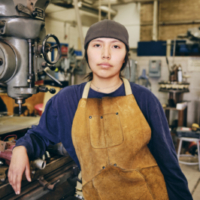3 States and 18 Localities Slated for Raises Later in 2019; More Campaigns for $15 at Federal and State Levels Set to Launch
Washington, DC—Millions of working people around the nation will ring in the New Year with a badly needed boost to their paychecks. Nineteen states and 21 cities, on or around January 1st, will phase in minimum wage increases or adjust their wage floors to keep up with the rising cost of living, according to an analysis released today by the National Employment Law Project.
Eight of these states—Arizona, California, Colorado, Maine, Massachusetts, Missouri, New York, and Washington State—are phasing in minimum wage increases that will eventually reach $12 to $15 an hour. Thirteen cities and counties will reach or exceed the $15 benchmark by January 1st.
Six years after fast-food workers in New York City launched the Fight for $15 movement with a demand for $15 an hour and the right to form a union, the momentum carrying the movement shows no sign of slowing.
“Minimum wage increases resonate strongly with so many Americans because people feel like they’re working harder than ever but have little to show for it,” said Christine Owens, executive director of the National Employment Law Project. “Working people are struggling to pay their bills, but they see that it’s the corporations and the wealthy CEOs who are getting the tax breaks. It’s just not right. The American people believe in the value of work—and that workers deserve to be valued. That’s why there’s such strong support for raising the minimum wage. People believe it’s the right thing to do, and they understand it’s one of the best ways to lift the incomes of working families who really need that money.”
By the time the multi-year minimum wage increases are fully phased in, 17 million workers from coast to coast will have received raises, accordingly to NELP’s analysis. An earlier study released by NELP last month, looking at a broader set of factors, found that 22 million workers have won $68 billion in raises since 2012, when the Fight for $15 movement began, through a combination of state and local minimum wage increases together with action by employers to raise their companies’ minimum pay scales.
African Americans, Latinos, and women make up a disproportionate number of workers making below $15 an hour, according to a 2016 NELP study. A $15 wage floor could play a critical role in closing the pay and wealth gaps for these communities, with potentially significant impact on future generations.
With control of the U.S. House of Representatives set to flip at the start of 2019, minimum wage advocates are gearing up to push legislation to gradually raise the federal minimum wage to $15. The federal minimum wage has been stuck at a poverty-level $7.25 since 2009; the tipped-worker minimum wage has been frozen at $2.13 since 1991. Cost-of-living data show that in all 50 states, workers will soon need $15 an hour or more just to afford basic living expenses.
“Here in the United States and around the world, we are seeing that politicians who ignore working people’s demand for economic fairness do so at their own peril,” said NELP’s Christine Owens. “That’s an important message for members of Congress to hear. It’s time they follow the lead of the states and cities. It’s time to raise the wage.”
DOWNLOAD THE REPORT: Raises From Coast to Coast in 2019
###
Related to
The Latest News
All newsWorkers Rights Organizations Condemn the Dismantling of Workplace Civil Rights Enforcement Agency

News Release
March Jobs Report: Immigrant Workers Power a Steady Economy, Full Impact of Trump Policies Yet to Come

News Release
NELP Urges New York Governor Kathy Hochul to Delay Flawed Transition of Medicaid CDPAP Homecare Program to Avoid Harm to Clients and Workers

News Release
